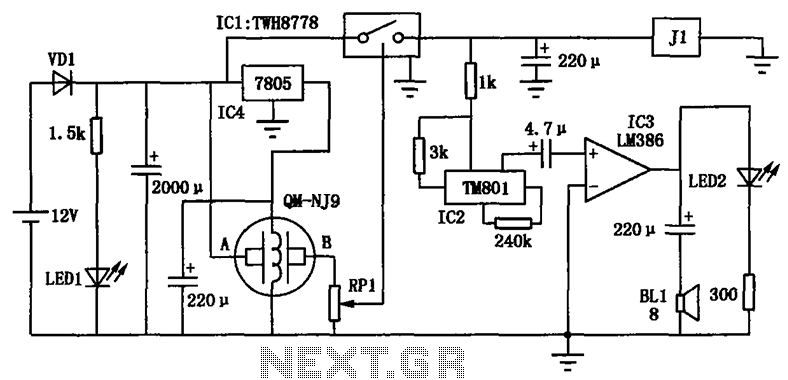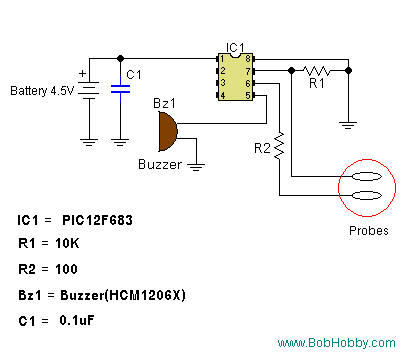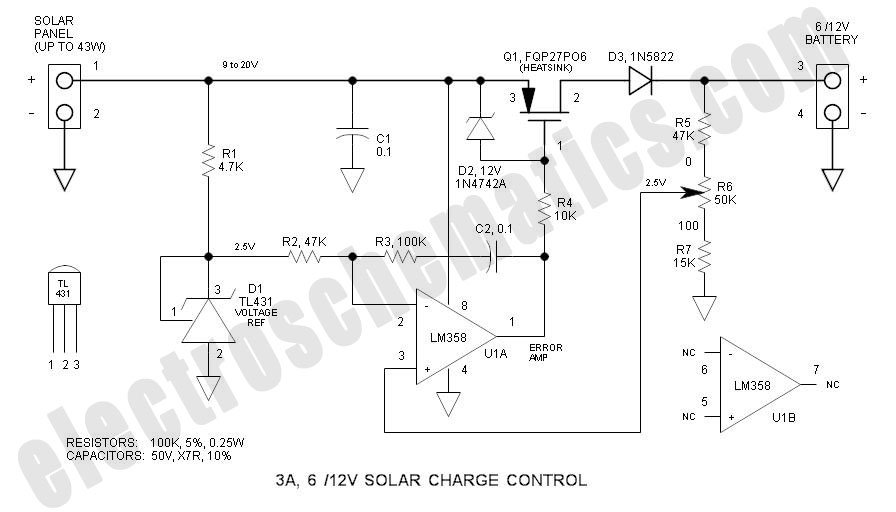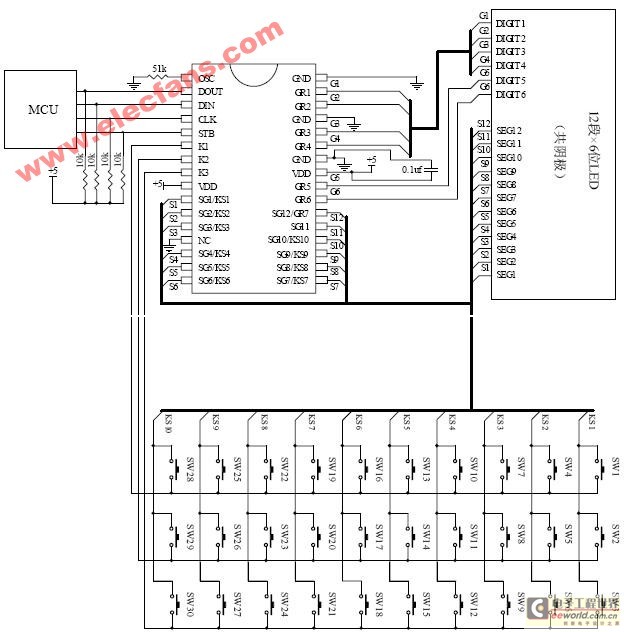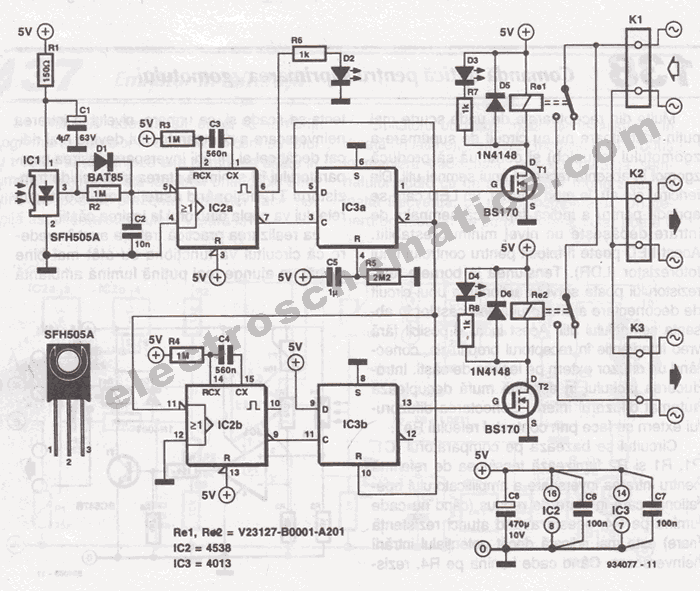
Pressure sensor circuit with a filtering and amplification circuit diagrams
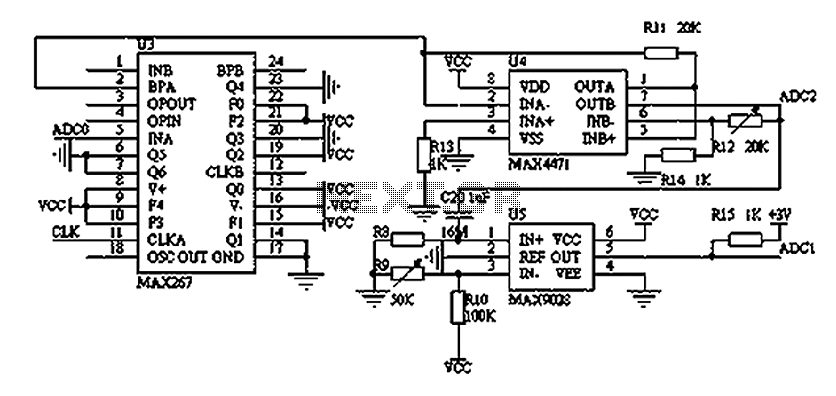
The filtering and amplifying circuit consists of two main components. The MAXIM MAX267 filter is an integrated circuit that can function as a low-pass, band-pass, high-pass filter, and other configurations, offering superior performance compared to traditional op-amp filters. The MAXIM MAX4471 is a low-power amplifier, while the MAXIM MAX9028 is a low-power comparator. The MAX267 filter is configured as a band-pass filter, allowing signals in the range of 0.8 to 38 Hz to pass through while filtering out DC components, power supply noise, and high-frequency interference from skin friction during blood pressure measurement. The output of the filter is then amplified by the MAX4471, which produces a voltage signal suitable for the ADC2, capturing the AC component of blood pressure. Additionally, the signal is processed through the low-power comparator MAX9028, which converts it into a pulse signal to activate ADC1.
The filtering and amplifying circuit is designed for precision in monitoring blood pressure by effectively managing signal integrity. The MAX267 integrated circuit serves as the primary filtering component, configured to operate as a band-pass filter that specifically allows low-frequency signals characteristic of blood pressure waveforms while rejecting unwanted high-frequency noise and DC offsets. This is critical in medical applications where accurate readings are necessary.
The MAX4471 amplifier follows the filtering stage, providing necessary gain to the filtered signal. This low-power amplifier is chosen for its efficiency, making it suitable for battery-operated devices. It ensures that the signal level is sufficient for further processing without introducing significant noise or distortion.
The output from the MAX4471 is directed to an analog-to-digital converter (ADC2), which digitizes the AC component of the blood pressure signal for digital processing and analysis. This step is essential for converting the analog signal into a format that can be easily manipulated and displayed by microcontroller-based systems.
Simultaneously, the MAX9028 comparator plays a crucial role in generating a pulse signal from the amplified output. This pulse signal is used to trigger another ADC (ADC1), which may be responsible for capturing different aspects of the blood pressure waveform or for timing purposes in the overall measurement cycle. The use of a comparator allows for precise timing and synchronization in the data acquisition process.
Overall, this circuit exemplifies a sophisticated approach to biomedical signal processing, integrating multiple components to ensure accurate, reliable, and efficient blood pressure monitoring. The design considerations include low power consumption, high performance, and the ability to filter out noise, making it suitable for use in portable medical devices.As illustrated, the filtering and amplifying circuit composed of two parts. Wherein the filter MAXIM MAX267 is an integrated company produced, may constitute a low-pass, band p ass, high pass, and other methods, the use of flexible, performance is far superior to filter integrated circuit op amp. MAXIMs MAX4471 is a low-power amplifier. MAXIMs MAX9028 is a low-power comparator. Filter circuit MAX267 constitute a band pass filter (0.8 ~ 38Hz signal allowed through), filter out the DC component of the signal and power supply and high-frequency noise and workers skin friction with the cuff frequency interference, and then after MAX4471 for further amplification, SCM get matching voltage signal into ADC2, the AC component of blood pressure monitoring.
Meanwhile, the signal passes through a low-power comparator MAX9028 converted into a pulse signal to trigger ADC1 work.
The filtering and amplifying circuit is designed for precision in monitoring blood pressure by effectively managing signal integrity. The MAX267 integrated circuit serves as the primary filtering component, configured to operate as a band-pass filter that specifically allows low-frequency signals characteristic of blood pressure waveforms while rejecting unwanted high-frequency noise and DC offsets. This is critical in medical applications where accurate readings are necessary.
The MAX4471 amplifier follows the filtering stage, providing necessary gain to the filtered signal. This low-power amplifier is chosen for its efficiency, making it suitable for battery-operated devices. It ensures that the signal level is sufficient for further processing without introducing significant noise or distortion.
The output from the MAX4471 is directed to an analog-to-digital converter (ADC2), which digitizes the AC component of the blood pressure signal for digital processing and analysis. This step is essential for converting the analog signal into a format that can be easily manipulated and displayed by microcontroller-based systems.
Simultaneously, the MAX9028 comparator plays a crucial role in generating a pulse signal from the amplified output. This pulse signal is used to trigger another ADC (ADC1), which may be responsible for capturing different aspects of the blood pressure waveform or for timing purposes in the overall measurement cycle. The use of a comparator allows for precise timing and synchronization in the data acquisition process.
Overall, this circuit exemplifies a sophisticated approach to biomedical signal processing, integrating multiple components to ensure accurate, reliable, and efficient blood pressure monitoring. The design considerations include low power consumption, high performance, and the ability to filter out noise, making it suitable for use in portable medical devices.As illustrated, the filtering and amplifying circuit composed of two parts. Wherein the filter MAXIM MAX267 is an integrated company produced, may constitute a low-pass, band p ass, high pass, and other methods, the use of flexible, performance is far superior to filter integrated circuit op amp. MAXIMs MAX4471 is a low-power amplifier. MAXIMs MAX9028 is a low-power comparator. Filter circuit MAX267 constitute a band pass filter (0.8 ~ 38Hz signal allowed through), filter out the DC component of the signal and power supply and high-frequency noise and workers skin friction with the cuff frequency interference, and then after MAX4471 for further amplification, SCM get matching voltage signal into ADC2, the AC component of blood pressure monitoring.
Meanwhile, the signal passes through a low-power comparator MAX9028 converted into a pulse signal to trigger ADC1 work.
